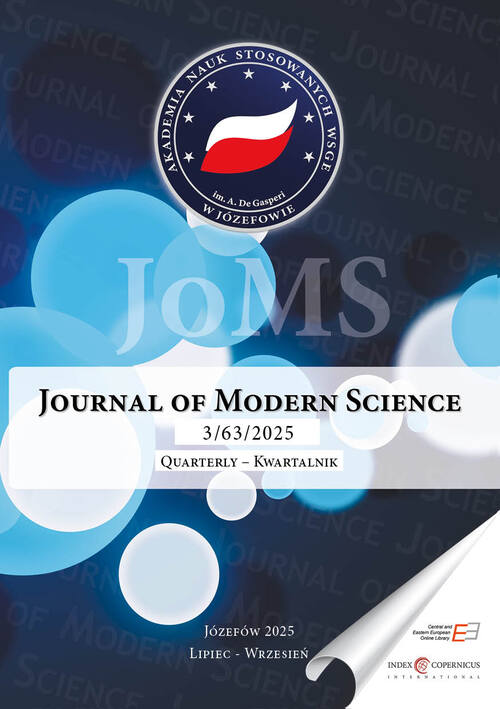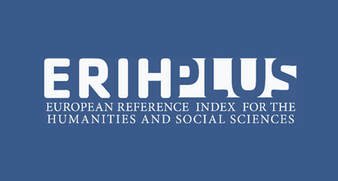About the Journal
Editorial Board
Scientific Council
Reviewers
Ethical Code
AI Policy
Special Issue
GDRP - information on the processing of personal data
Terms of the journal
Indexing
Licenses & Access
Archive
For Authors
Publishing Policy
Technical instruction for the authors
Agreement CC BY-SA
Copyright statement
Publication procedure
Peer Review Process
Reviewer’s form .doc
Reviewer’s form .pdf
Contact
About the Journal
Editorial Board
Scientific Council
Reviewers
Ethical Code
AI Policy
Special Issue
GDRP - information on the processing of personal data
Terms of the journal
Indexing
Licenses & Access
AI Policy
GENERATIVE ARTIFICIAL INTELLIGENCE POLICY OF THE JOURNAL OF MODERN SCIENCE
Use of Artificial Intelligence (AI) Tools in Manuscript Preparation - Guidelines for Authors
1. Obligation to Disclose AI Use
2. Permissible Scope of AI Use
3. Responsibility for Content
4. Policy on Images and Graphics
5. Consequences of Non-Disclosure
– – –
Use of Artificial Intelligence (AI) Tools in the Peer Review Process - Guidelines for Reviewers
1. Confidentiality of Documents and Data
2. Confidentiality of the Review Report
3. Prohibition of AI Use for Substantive Evaluation
4. Compliance with Authors’ AI Use Policy
– – –
Use of Artificial Intelligence (AI) Tools in the Editorial Process – Guidelines for Editors
1. Confidentiality of Manuscripts and Correspondence
2. Prohibition of AI Use for Editing Correspondence
3. Exclusive Human Responsibility for Editorial Decisions
Use of Artificial Intelligence (AI) Tools in Manuscript Preparation - Guidelines for Authors
1. Obligation to Disclose AI Use
Authors who employ generative artificial intelligence (AI) tools or other technologies to assist in the preparation of their manuscript are required to disclose this fact in the paper. Information regarding AI use should be provided either in the Materials or Methods section or in the Supplementary Information section and must include:
- the name of the AI tool used (including the model designation),
- the software version and date of use,
- an exact description of the prompt employed to generate the text.
- the name of the AI tool used (including the model designation),
- the software version and date of use,
- an exact description of the prompt employed to generate the text.
2. Permissible Scope of AI Use
AI tools may be used exclusively for the purposes of improving clarity, style, translations, and linguistic editing. The use of AI to generate substantive content, produce research data, or perform analyses is strictly prohibited. Authors must independently verify and edit all AI-generated content, as such tools may produce incomplete, erroneous, or biased information.
3. Responsibility for Content
Authors bear sole responsibility for the final content of the manuscript, including the accuracy, originality, and integrity of all its components, even those prepared with AI assistance. AI tools must not be listed as authors or co-authors, as authorship requires accountability, the ability to approve the final version, and compliance with all ethical standards, which are the criteria that can be fulfilled only by a human.
4. Policy on Images and Graphics
The use of AI to create or modify images, illustrations, and figures presented in the manuscript is prohibited, except in cases where such use is an integral part of the research methodology and is described in detail in the methodology section, including the tool name, version, and method of use. This restriction does not apply to the use of AI for generating charts or graphs based on data independently produced by the author. In such instances, AI is considered a graphic design tool, analogous to software such as Excel. The resulting chart must be a faithful, transparent visualisation of the data, each axis, point, and value must be comprehensible, easily verifiable, and reproducible. Authors are additionally required to disclose such use in the Materials or Methods section or in the Supplementary Information section.
5. Consequences of Non-Disclosure
Undisclosed use of AI tools in manuscript preparation will be considered a violation of publication ethics and may result in rejection of the submission or the imposition of disciplinary measures. The Journal of Modern Science reserves the right to conduct AI-content detection using tools available within the Plagiat.pl platform.
– – –
Use of Artificial Intelligence (AI) Tools in the Peer Review Process - Guidelines for Reviewers
1. Confidentiality of Documents and Data
Reviewers receiving a manuscript for evaluation must treat it as a strictly confidential document. Uploading the manuscript, in whole or in part, into generative AI tools is prohibited, as this may infringe copyright, compromise author confidentiality, and if personal data are involved, violate data protection regulations.
2. Confidentiality of the Review Report
The review report contains confidential information about the manuscript and its authors; therefore, it must not be entered into AI tools, even for the sole purpose of improving style or language.
3. Prohibition of AI Use for Substantive Evaluation
The peer review process requires critical thinking, original judgement, and subject expertise, which are capabilities unique to human reviewers. AI is not an appropriate tool for supporting scholarly evaluation, as it may produce flawed, incomplete, or biased conclusions. Reviewers bear full responsibility for the content of their reports.
4. Compliance with Authors’ AI Use Policy
Authors may use AI tools solely for language and style improvements, with proper disclosure. Reviewers may find such disclosures in the manuscript, typically in the section preceding the references list.
– – –
Use of Artificial Intelligence (AI) Tools in the Editorial Process – Guidelines for Editors
1. Confidentiality of Manuscripts and Correspondence
Editors are required to treat submitted manuscripts as strictly confidential documents. Uploading manuscripts or their excerpts into generative AI tools is prohibited, as this may infringe copyright, compromise author confidentiality, and if personal data are involved, violate data protection regulations. This confidentiality obligation also applies to all manuscript-related correspondence, including informational letters and editorial decisions.
2. Prohibition of AI Use for Editing Correspondence
Editors must not use AI tools to improve the language or style of editorial correspondence containing confidential information, even if such use is intended solely to enhance communication efficiency.
3. Exclusive Human Responsibility for Editorial Decisions
The evaluation of manuscripts and the making of editorial decisions require critical thinking, subject expertise, and original judgement responsibilities that rest exclusively with human editors. AI tools must not be used to support decision-making in the editorial process, as they may generate inaccurate, incomplete, or biased assessments.
We process personal data collected when visiting the website. The function of obtaining information about users and their behavior is carried out by voluntarily entered information in forms and saving cookies in end devices. Data, including cookies, are used to provide services, improve the user experience and to analyze the traffic in accordance with the Privacy policy. Data are also collected and processed by Google Analytics tool (more).
You can change cookies settings in your browser. Restricted use of cookies in the browser configuration may affect some functionalities of the website.
You can change cookies settings in your browser. Restricted use of cookies in the browser configuration may affect some functionalities of the website.













